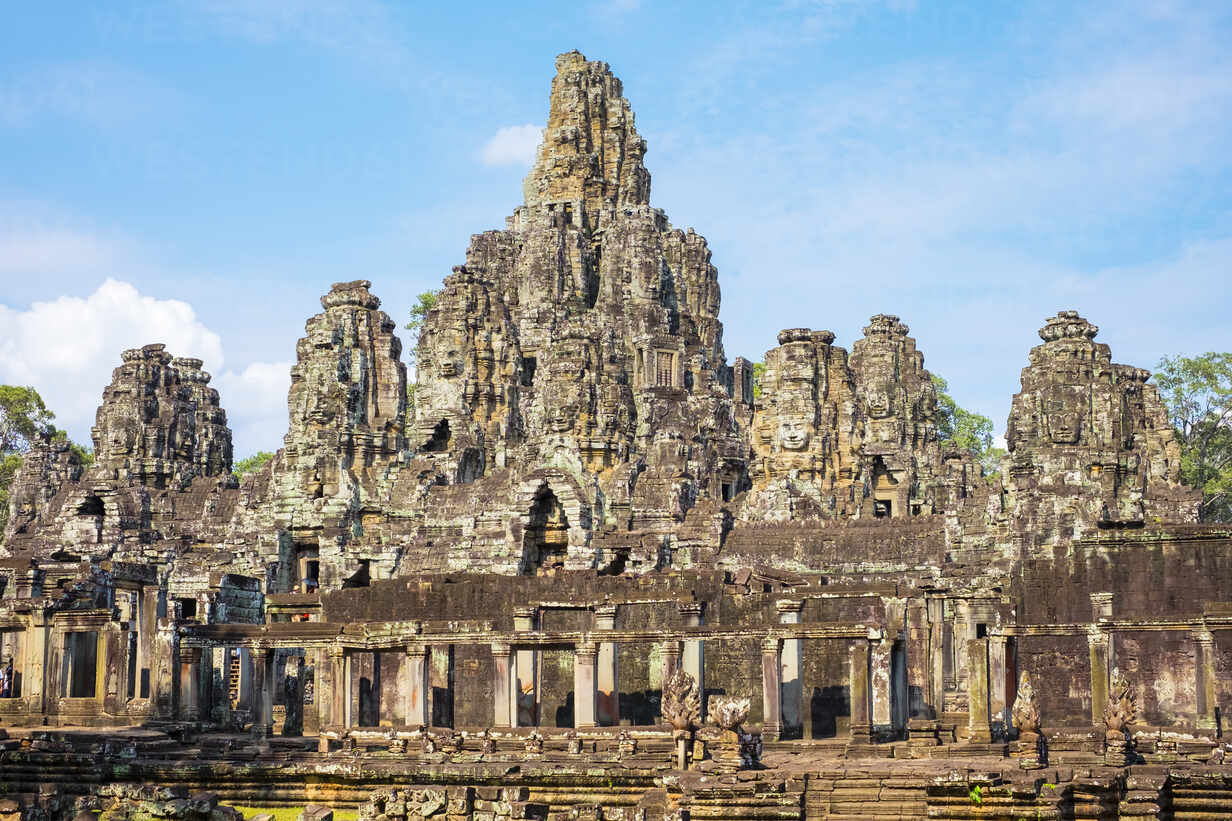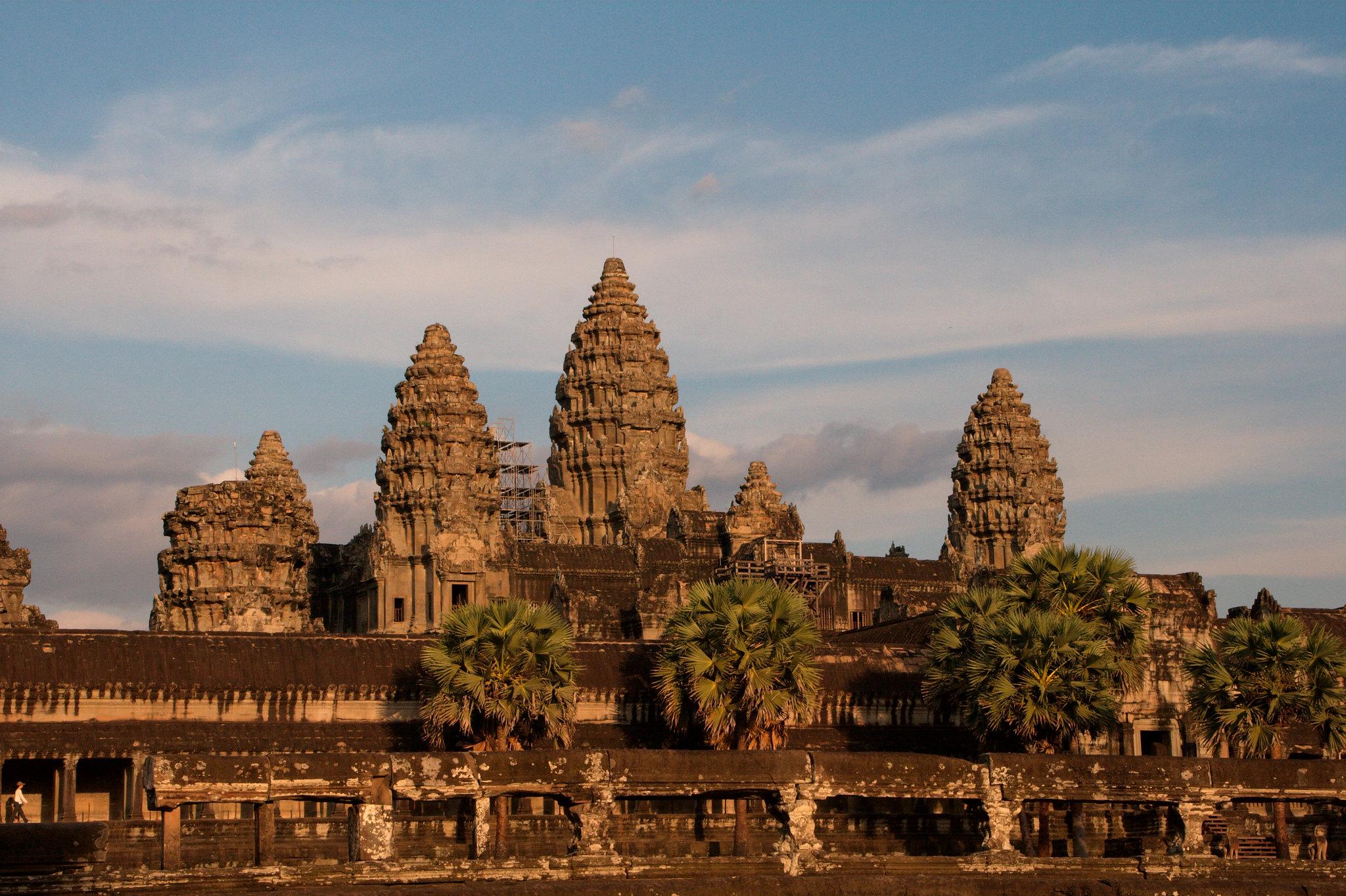Anthropology
Related: About this forumAt Its Peak, The Ancient Khmer City Of Angkor Dwarfed The Great Cities Of Europe

By Stephen Luntz
05 MAY 2021, 19:00
The city of Angkor in what is now Cambodia has long been known as one of the world's great former cities. However, just how large it was at its peak has remained debated, with most of the city reclaimed by the jungle and its extent unclear. A new study indicates that at its height in the 13th century, Angkor housed 10 times as many people as London at the same time, far exceeding any contemporary European city.
The Khmer Empire (802 CE to 1431 CE), ruled from Angkor, covered modern-day Cambodia, Laos, and much of Thailand and Vietnam. European visitors to southeast Asia were astonished by the scale of Angkor Wat, the immense temple at the city's heart, thought to be the largest religious structure by land area in the world. They used various methods to attempt to estimate how many people once lived around it. Their techniques were unreliable, however, and came up with wildly diverging figures. The process has continued since, interrupted by the challenges of visiting the area during the Khmer Rouge (1951 –1999) horrors and the civil war that followed.
Dr Sarah Klassen of the University of British Columbia has taken up the task, using modern technology such as helicopter-mounted lidar to expand our knowledge of the city's changing extent, along with traditional archaeological excavation data, to present the first model of demographic growth in Angkor.
“Estimating Angkor’s population has been an enduring challenge, as conventional methods for estimating population size and density in urban areas are not easily applied at Angkor, where nonreligious architecture was composed almost entirely of organic materials that decayed centuries ago, leaving no structural remains,” Klassen and co-authors write in Science Advances.
More:
https://www.iflscience.com/editors-blog/at-its-peak-the-ancient-khmer-city-of-angkor-dwarfed-the-great-cities-of-europe/
mopinko
(70,092 posts)ratchiweenie
(7,754 posts)BootinUp
(47,144 posts)BigmanPigman
(51,590 posts)"The causes of Angkor's decline are even more heavily debated than its peak size, but disease and changes to the monsoon season probably contributed, along with failures to keep up the irrigation system on which the city depended. This allowed the Khmers to fall under the power of the neighboring Siamese empire, who sacked Angkor in retribution for a revolt in 1431, leading to most of its citizens abandoning the city."
grantcart
(53,061 posts)1) The article radically understates the achievement of the Khmer Kingdom and misses the great technological advance that enabled its existence.
Ankor wasn't just the greatest city of its time it was the only inland city of its size as all large cities were situated on the coast, like London. The ports enabled trade that would bring food in the form of inexpensive calories needed for the urban classes to live and work in non agricultural trades. The next evolution of transporting cheap calories for the urban masses developed in the mid 19th century when the railroad would bring in cattle that could graze for free in South Dakota and other areas in the mid west. With the railroad workers in NYC could eat fresh meat that was grazing just hours before.
2) The genius of Ankor laid in the ability to maintain massive irrigation through canal systems linked to Tonle Sap and the basin. Connected to the Tonle Sap River the water flows one way for 6 months and then reverses itself.
While most observers marvel at the engineering miracle of Ankor Wat the real engineering feat was constructing massive artificial ponds and canals that enabled year round irrigation.
In Asia all agricultural land is able to have one rice crop a year. Some areas with good irrigation systems get 2. One thousand years ago the Khmers were able to produce 3 crops a year that allowed for a massive inland urban population, that did not exist anywhere else in the world. It is still a remarkable achievement.
3) In stating that the Khmers ruled an area " covered modern-day Cambodia, Laos, and much of Thailand and Vietnam" is not quite correct. They established suzerainty over the area but not administrative or military rule.
To begin with the country to the west of the Khmer Kingdom was Siam not Thailand and to the East was the Cham Kingdom not the Vietnamese. At that time regions of Siam were ruled by local Princes and they cooperated with the Khmer Kingdom through tribute and loose vassal allegiance. This is not to understate Khmer influence through trade which was enormous with vast trading of ceramics, pottery and other high skilled products that reached from Indonesia to China.
While there were frequent wars between the Khmers and the Chams, Khmer influence on the western side was through a series of negotiated fealty agreements. When a local Sukhotai prince decided that the taxing system was onerous the Siamese organized an army and defeated the Khmer Kingdom's army and led to the founding of Siam. Sukhotai would remain the capital for 200 years when rival princes from Ayutthaya sacked the capital and moved it to Ayutthaya.
Hekate
(90,674 posts)Judi Lynn
(160,527 posts)
Judi Lynn
(160,527 posts)New research tracks the famed southeast Asian city’s growth over hundreds of years

At its height in the 13th century, Angkor boasted a population of around 700,000 to 900,000. (Christian Haugen via Flickr under CC BY 2.0)
By Livia Gershon
SMITHSONIANMAG.COM
MAY 12, 2021 2:21PM
During the 13th century, the southeast Asian city of Angkor—known for its famed Angkor Wat temple—was home to 700,000 to 900,000 people, new research suggests. This figure makes Angkor one of the largest cities to exist prior to the modern period. It’s also on par with the size of many current-day cities: Boston, for instance, had a population of about 693,000 in 2019.
As Sarah Cascone reports for Artnet News, a new paper published in the journal Science Advances combines 30 years of excavation data with LiDAR (light detection and ranging) scans to reach the new estimate. The ruins of the city, located in what’s now northwestern Cambodia, are renowned for their stone temples, buildings and infrastructure. Thanks to the scanning technology, archaeologists were able to see remnants of structures and landscape features outside of Angkor’s “downtown” area, including buildings crafted from wood and less durable materials.
“When you are on the ground in the main parts of the city center it is quite forested,” says co-lead author Alison K. Carter, an archaeologist at the University of Oregon, in a statement. “As you walk around you can tell there is something in the landscape around you, but you cannot see anything clearly. LiDAR gave us a beautiful grid of mounds and depressions, which we think were little ponds.”
Per Gizmodo’s George Dvorsky, the researchers examined the mounds surrounding Angkor Wat, discovering that the city’s inhabitants built one house on each of the enormous earthworks. These homes probably housed an average of five people.
More:
https://www.smithsonianmag.com/smart-news/13th-century-angkor-was-home-more-people-boston-today-180977719/
COL Mustard
(5,897 posts)How could they rule without air conditioning??? How primitive. How savage.
ArchTeryx
(221 posts)... does not mean stupid. It just means "low tech." A primitive civilization still has all of human ingenuity on their side, and they make the absolute best use of the technology they have - sometimes such good use, it boggles the much higher tech civilizations that follow it.
Repeat after me: Primitive does not mean stupid.